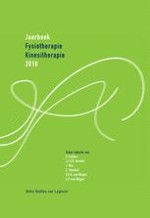Samenvatting
In dit hoofdstuk wordt ingegaan op de vraag of mentale training gebruikt zou kunnen worden voor het veranderen van motoriek, emoties en cognities bij patiënten met een verworven centraal neurologische aandoening. Als theoretische basis wordt een werkmodel uit de sport geschetst, waarin deze effecten van mentale training gepresenteerd worden. Voor het bepalen van effecten worden zowel kwantitatieve als kwalitatieve onderzoekstechnieken gebruikt, deze worden kort toegelicht. Vervolgens wordt ingegaan op de bestaande bewijskracht binnen de neurologische revalidatie. Na het benoemen van de hiaten in het onderzoek en ontbrekende informatie, worden aanbevelingen gedaan voor toekomstig onderzoek.
